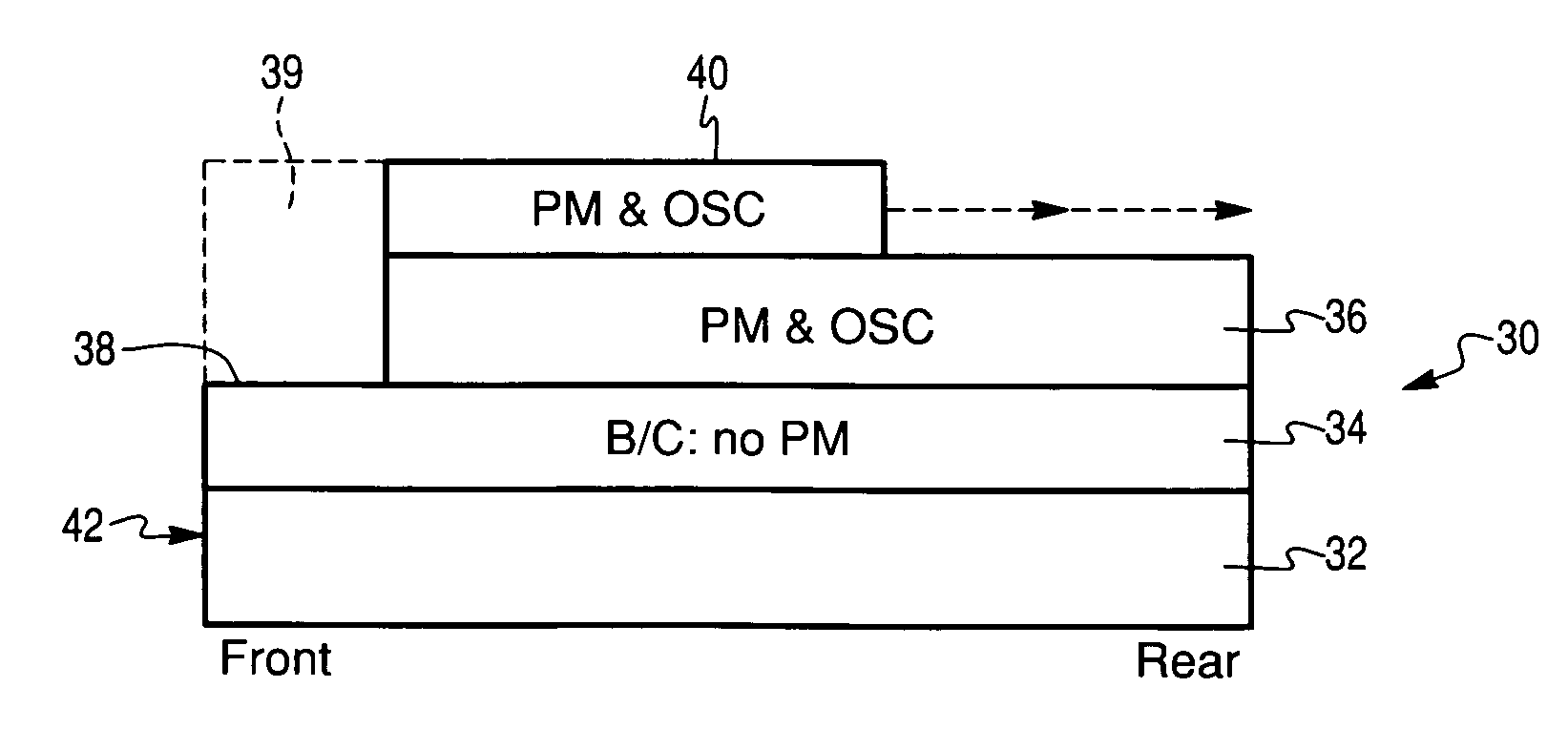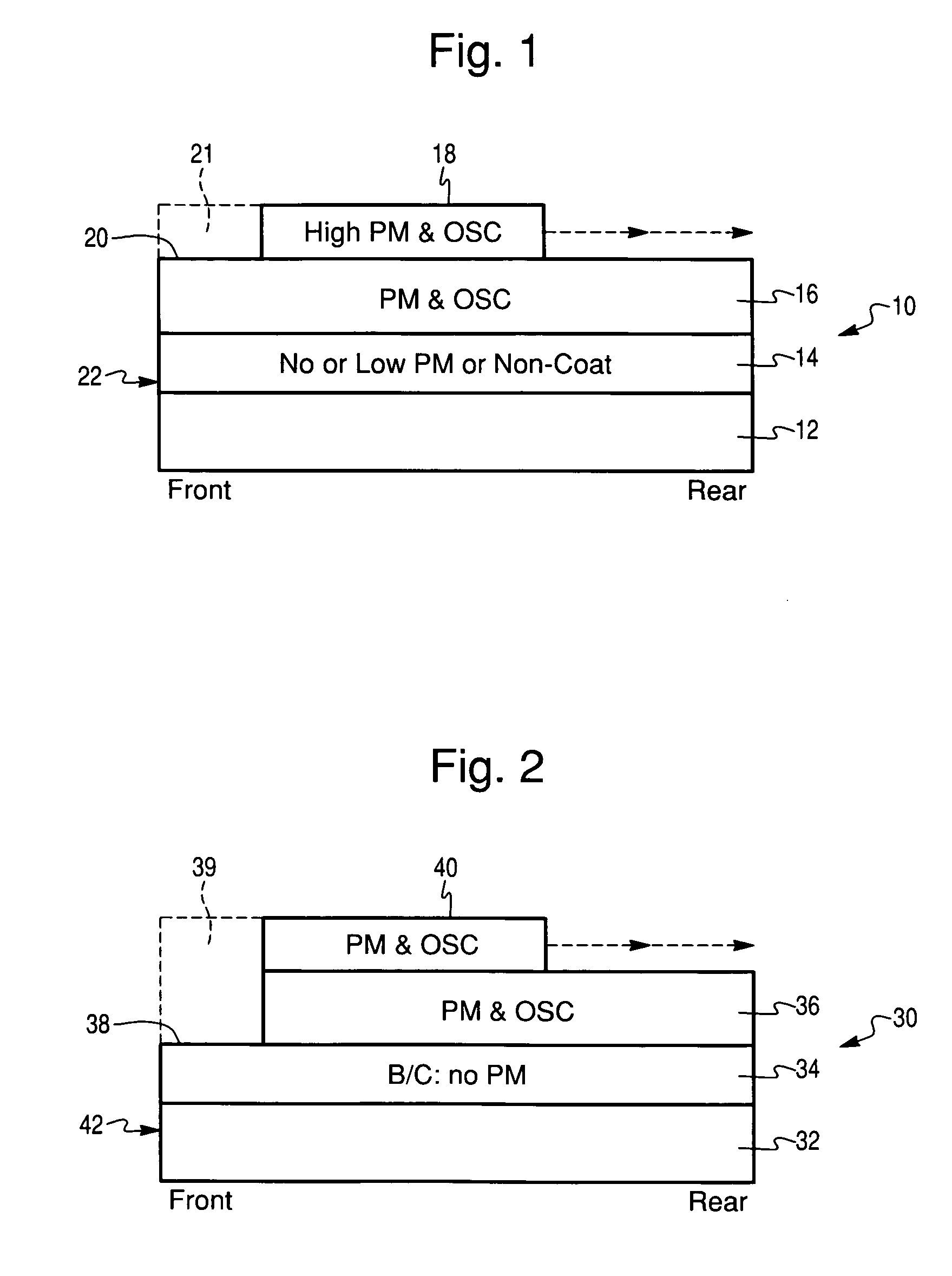High phosphorous poisoning resistant catalysts for treating automobile exhaust
a technology of high phosphorous and catalysts, which is applied in the direction of physical/chemical process catalysts, separation processes, lighting and heating apparatus, etc., can solve the problems of limiting the durability of catalysts, requiring further increase of catalyst levels, and affecting the effect of catalyst durability
- Summary
- Abstract
- Description
- Claims
- Application Information
AI Technical Summary
Benefits of technology
Problems solved by technology
Method used
Image
Examples
example
[0046] In this example, a catalyst like that shown in FIG. 1 is formed.
[0047] A first poison capture layer was formed on a ceramic honeycomb. 92.8 parts of gamma-alumina was combined with 7.3 parts of alumina-based binder, 2.9 parts of zirconia based binder, 562 parts DI-water, and 70 parts of 90% concentrated acetic acid to make a slurry of 40% solids content before proceeding to milling. Milling was conducted until the particle size distribution showed that 90% of particles became less than 10 microns.
[0048] After milling, the slurry was coated onto a ceramic honeycomb with 900 cells per square inch (cpsi) and with a wall thickness of 2.5 mils. The coating was performed by dipping the honeycomb substrate into the slurry, draining the slurry, and subsequently by blowing off the excessive slurry with compressed air. The coated honeycomb was dried at 110° C. for 4 hrs. and calcined at 550° C. for 2 hrs.
[0049] A middle layer was then formed by the following procedure. In a planetar...
PUM
| Property | Measurement | Unit |
|---|---|---|
| length | aaaaa | aaaaa |
| concentration | aaaaa | aaaaa |
| temperatures | aaaaa | aaaaa |
Abstract
Description
Claims
Application Information
 Login to View More
Login to View More - R&D
- Intellectual Property
- Life Sciences
- Materials
- Tech Scout
- Unparalleled Data Quality
- Higher Quality Content
- 60% Fewer Hallucinations
Browse by: Latest US Patents, China's latest patents, Technical Efficacy Thesaurus, Application Domain, Technology Topic, Popular Technical Reports.
© 2025 PatSnap. All rights reserved.Legal|Privacy policy|Modern Slavery Act Transparency Statement|Sitemap|About US| Contact US: help@patsnap.com


